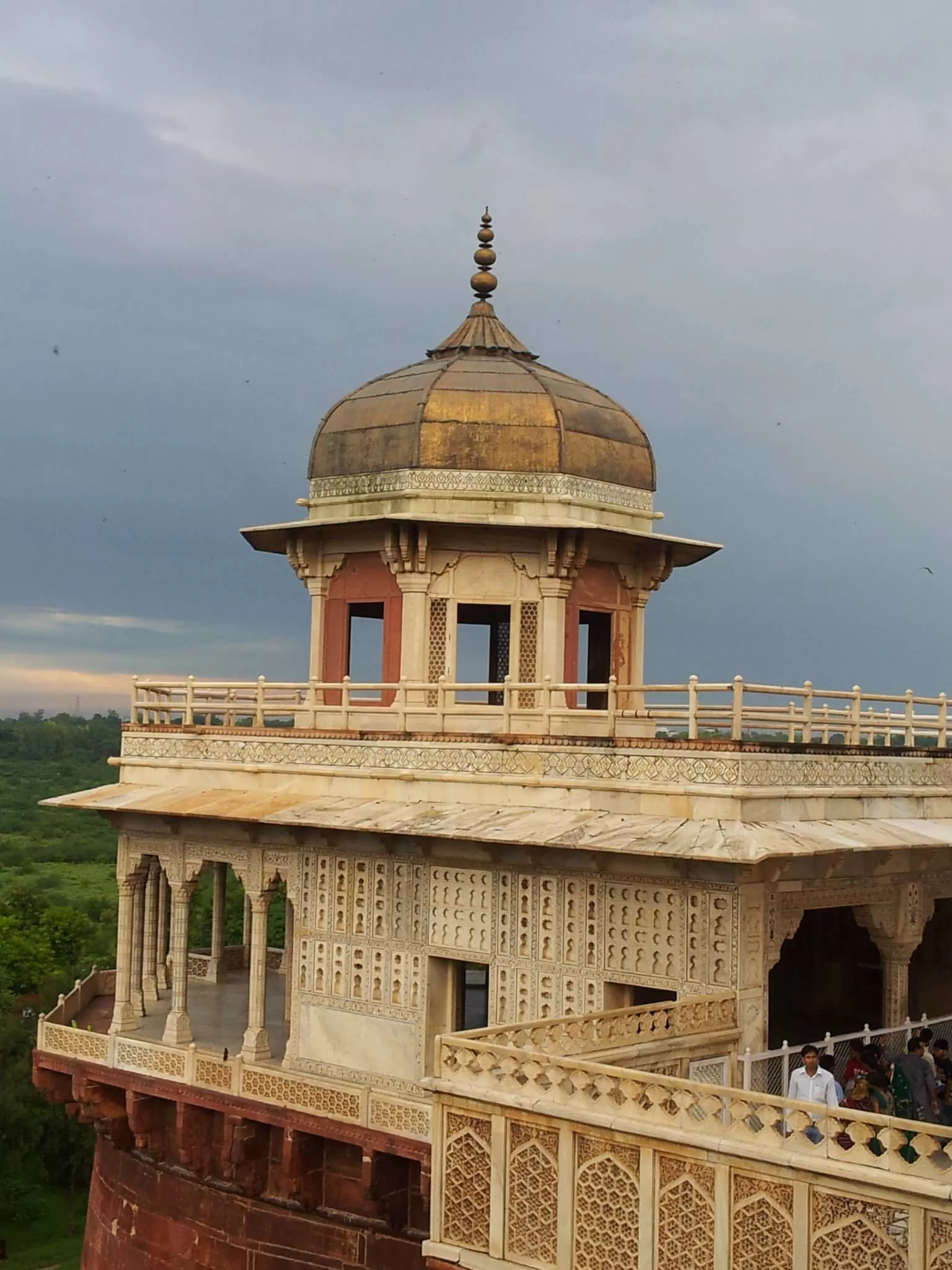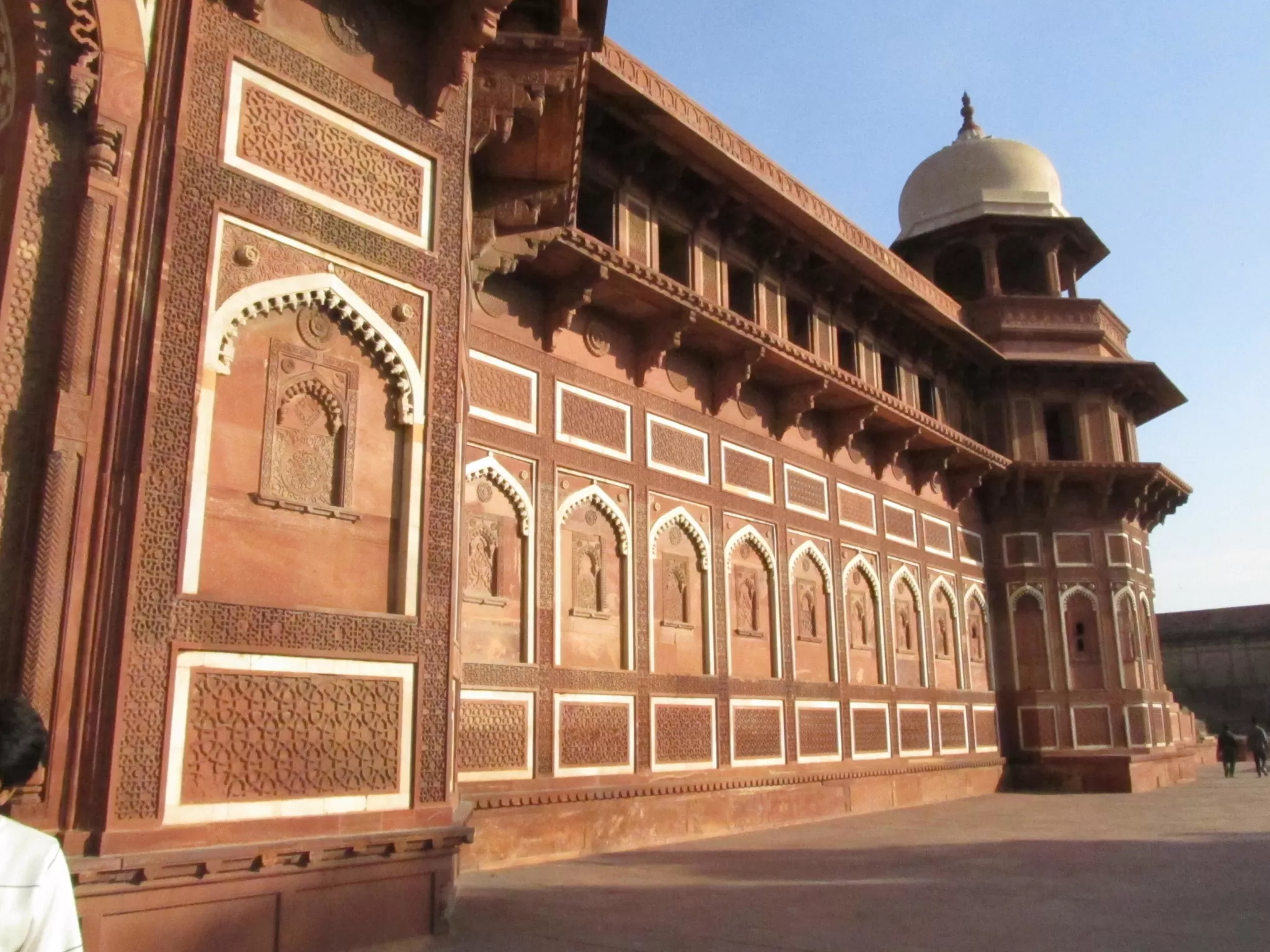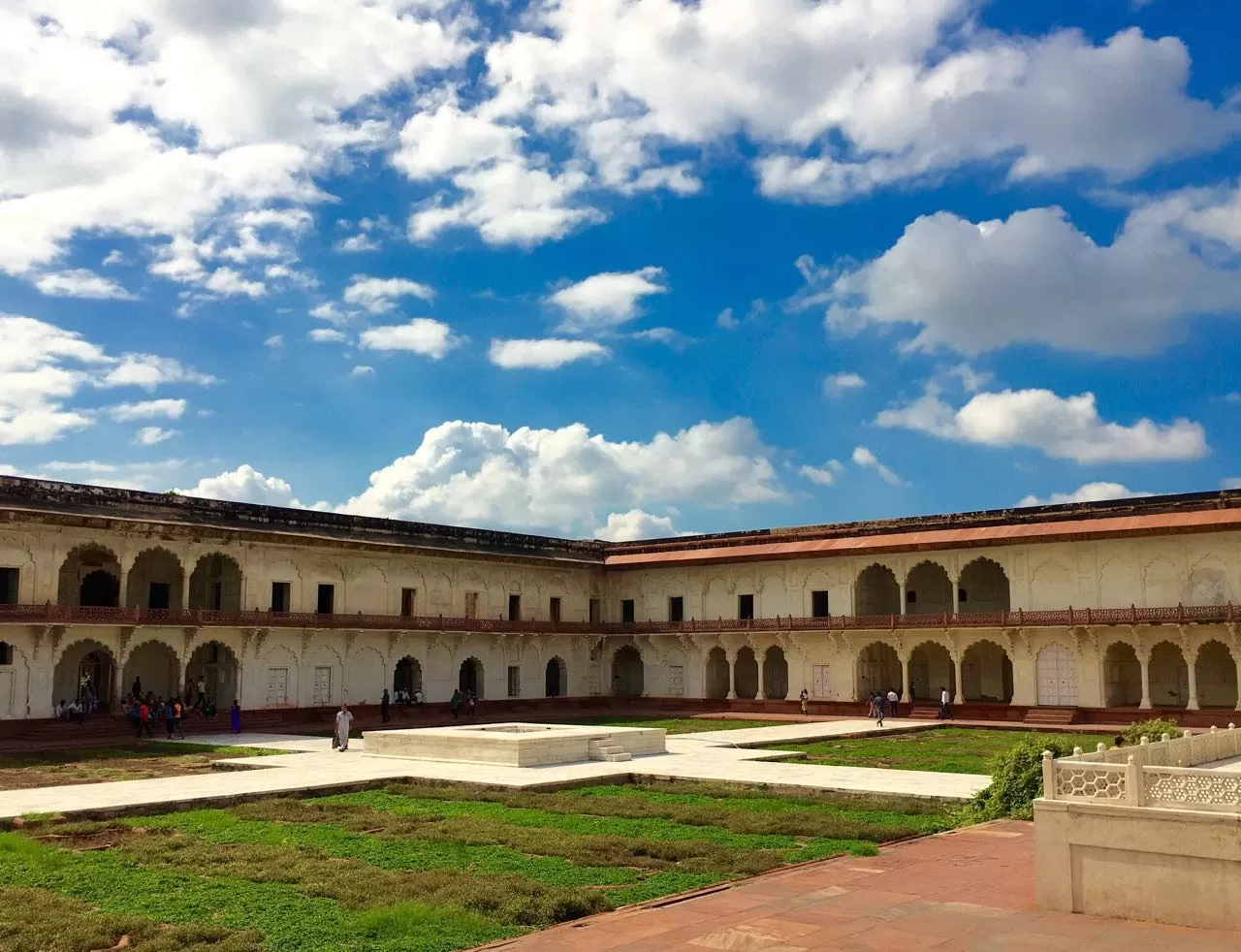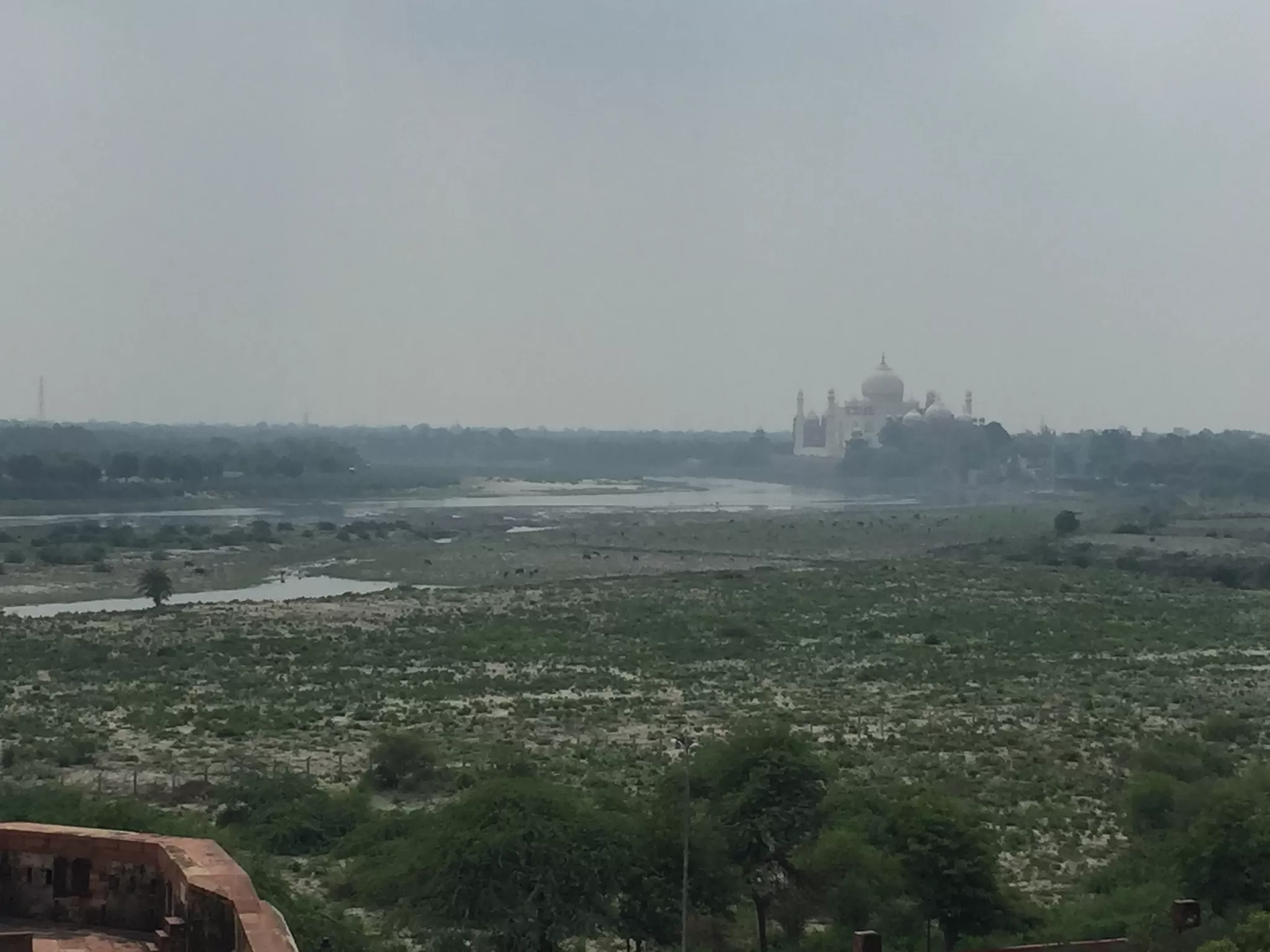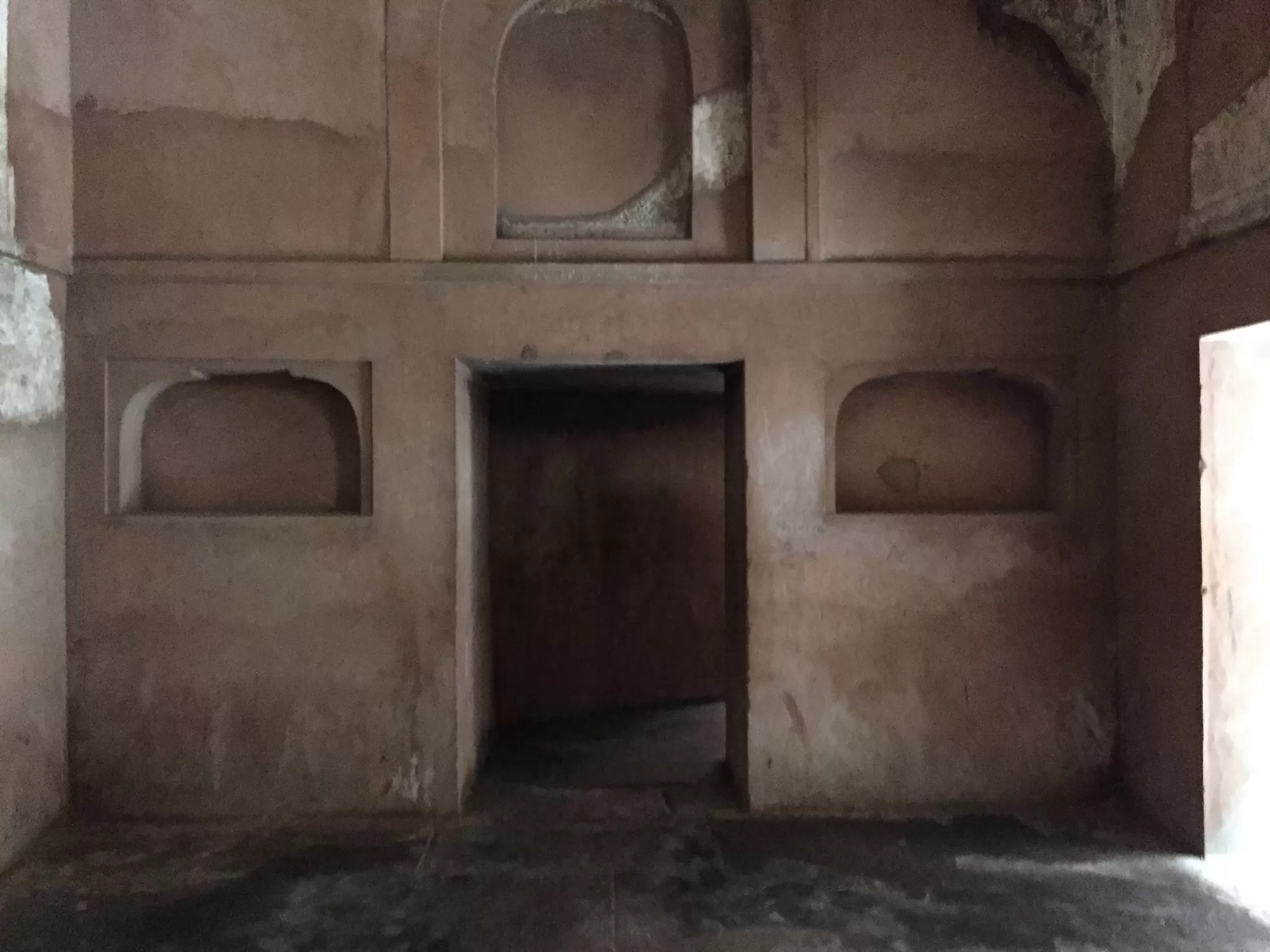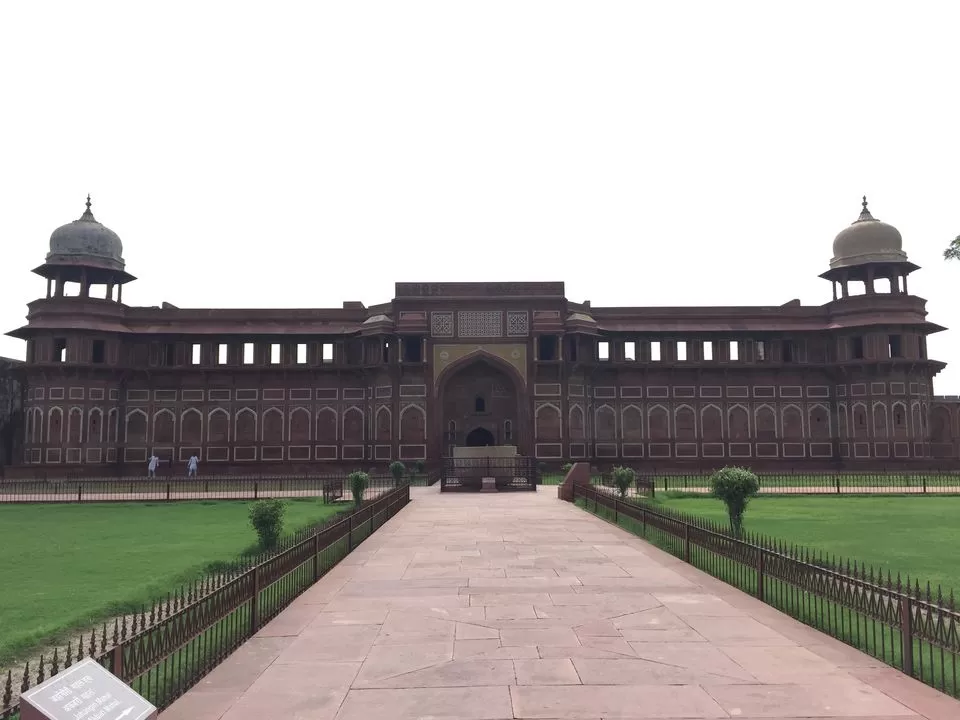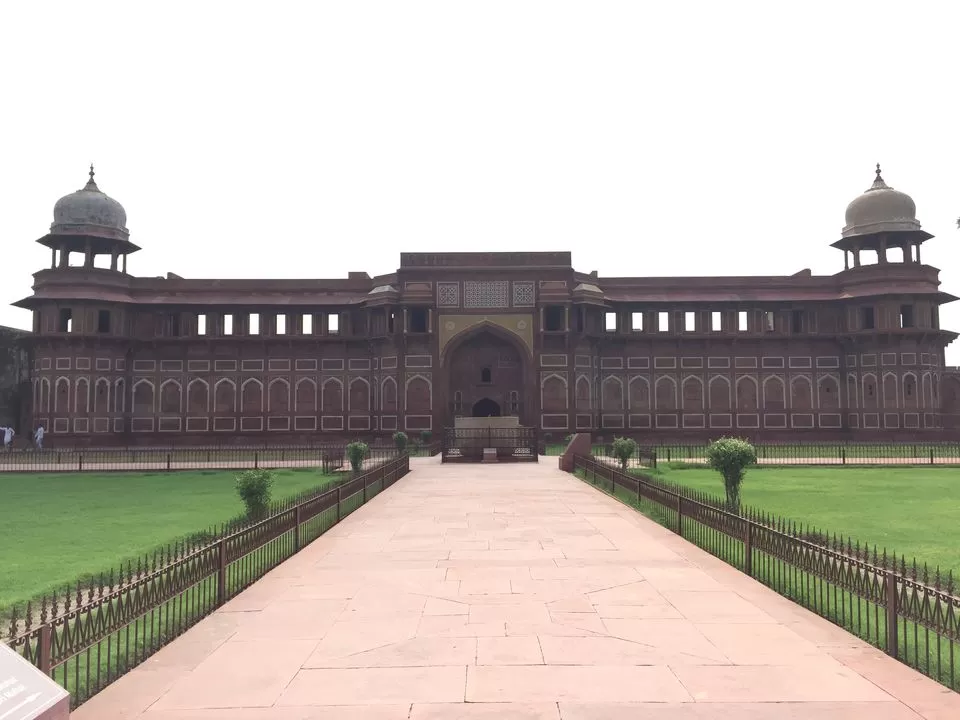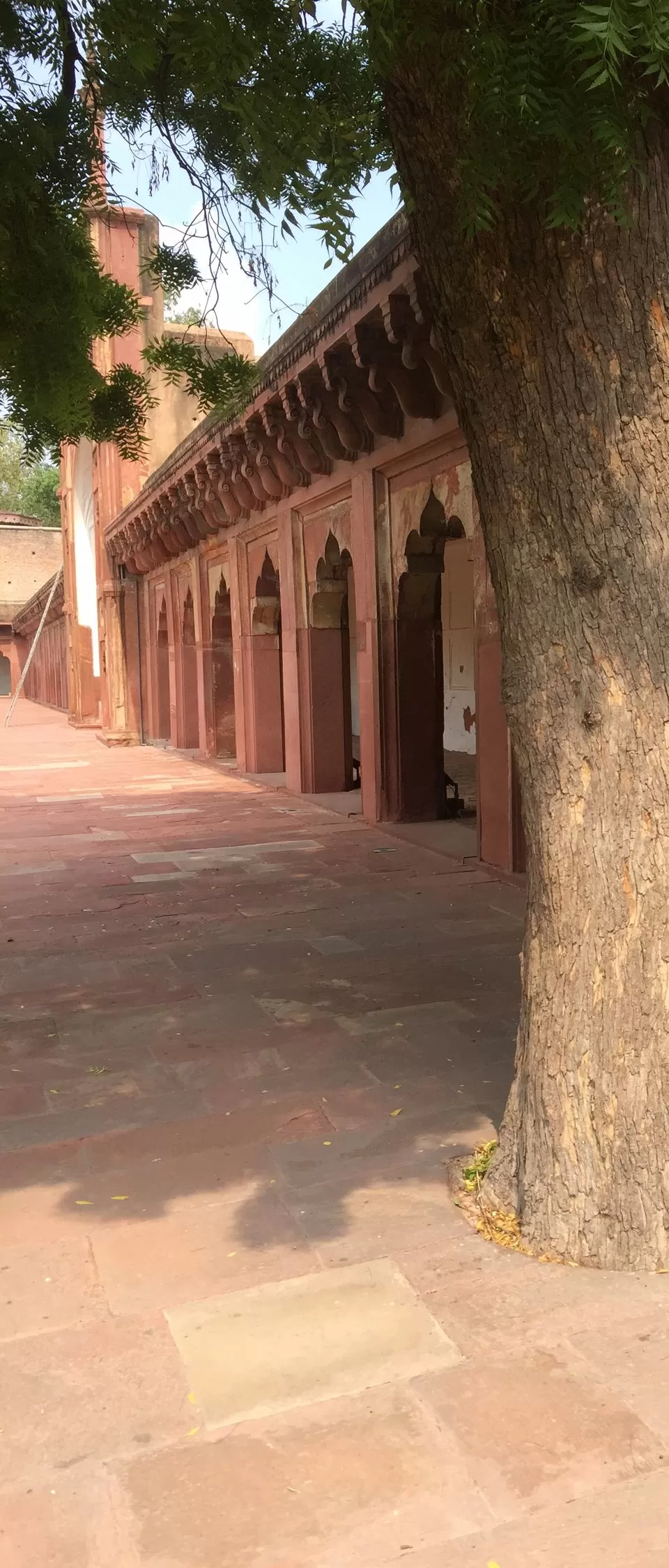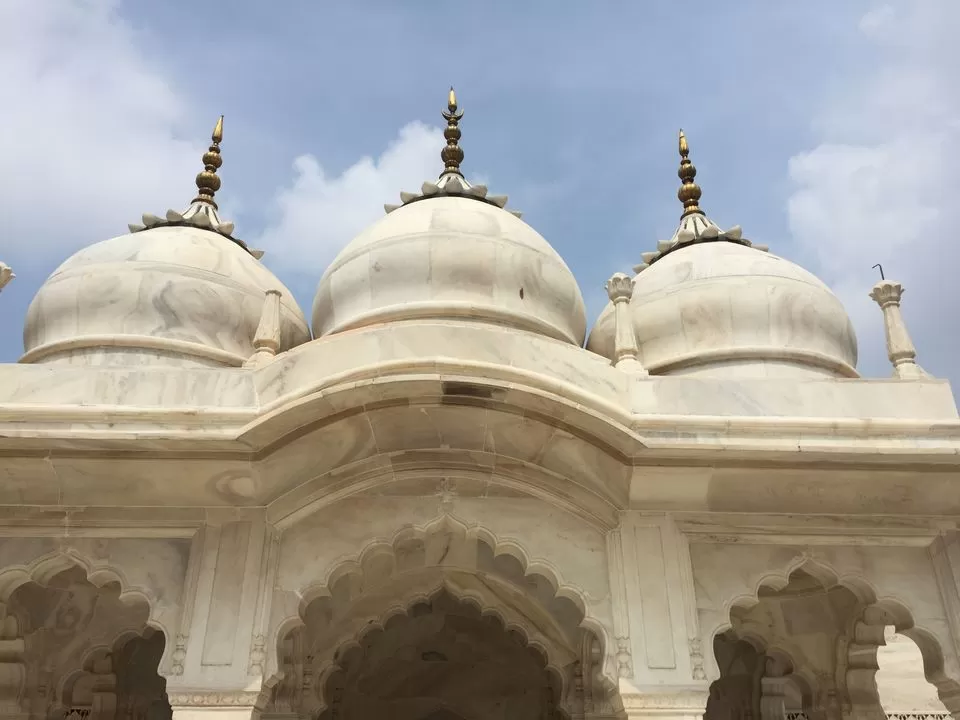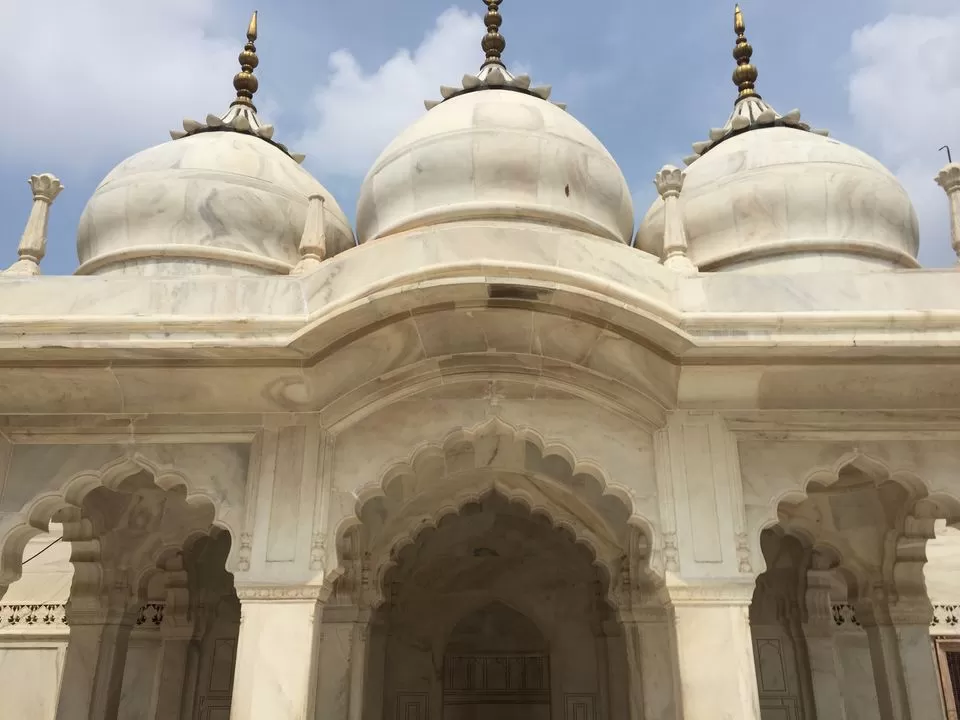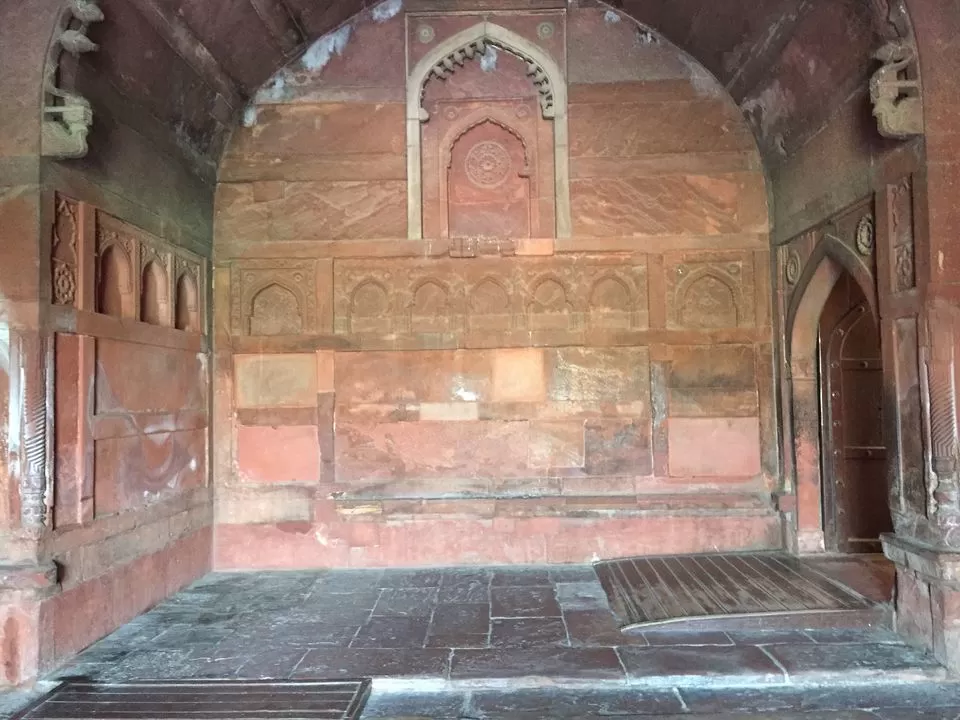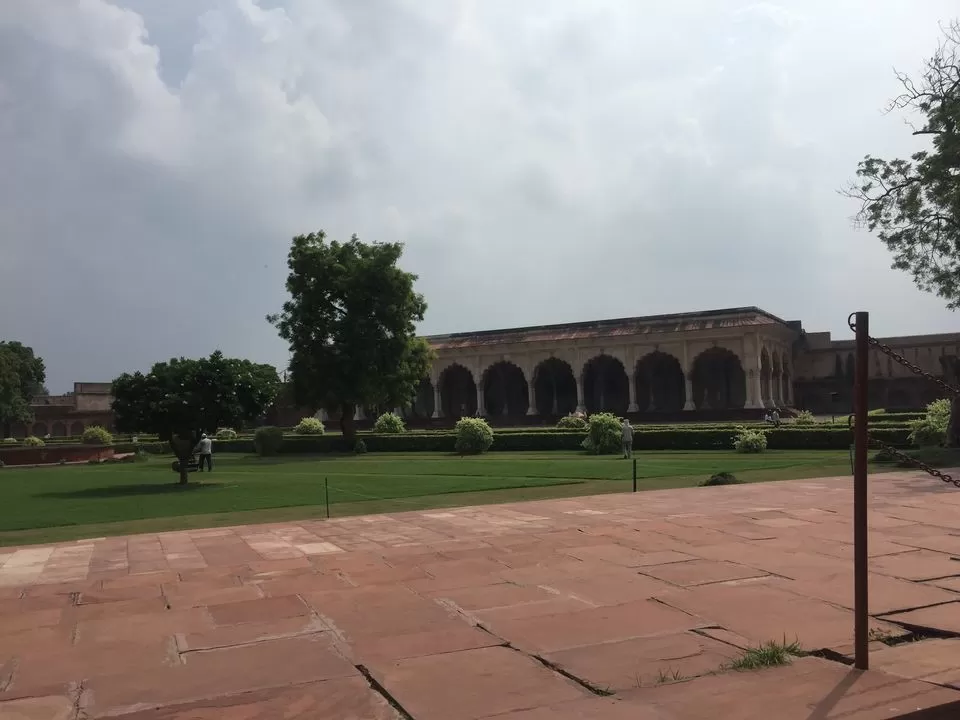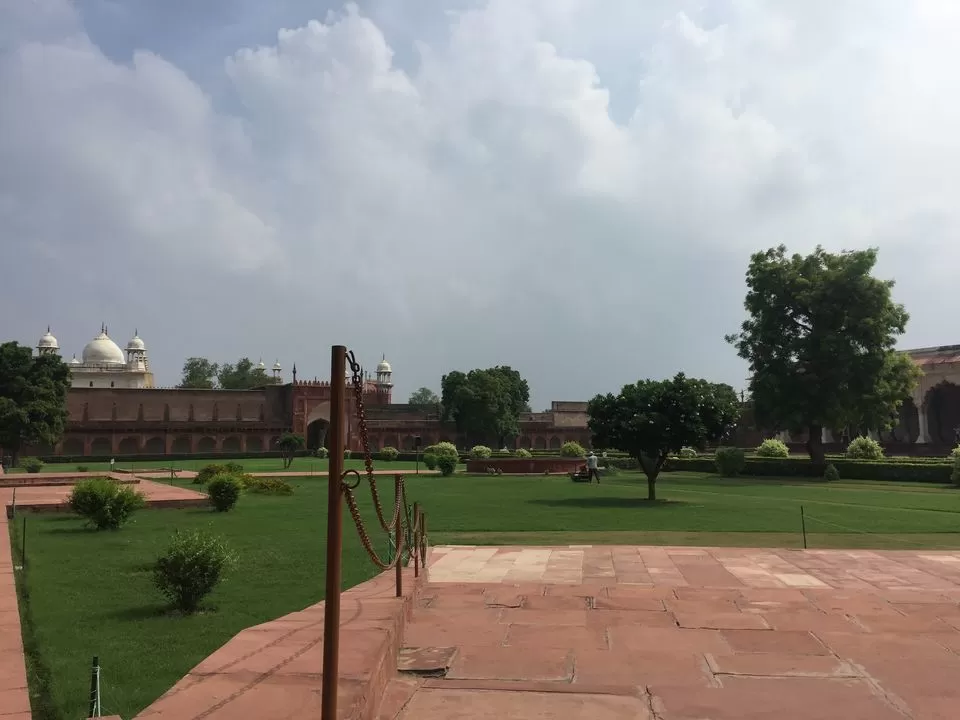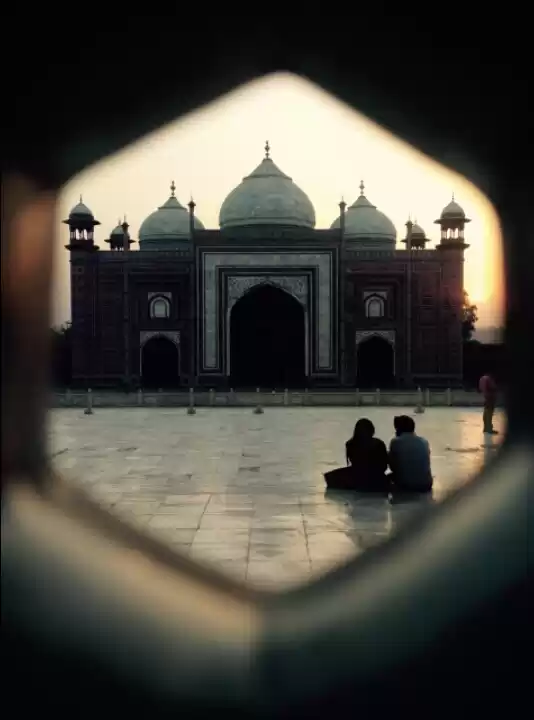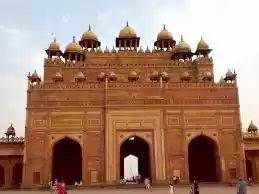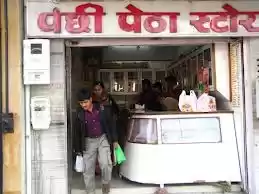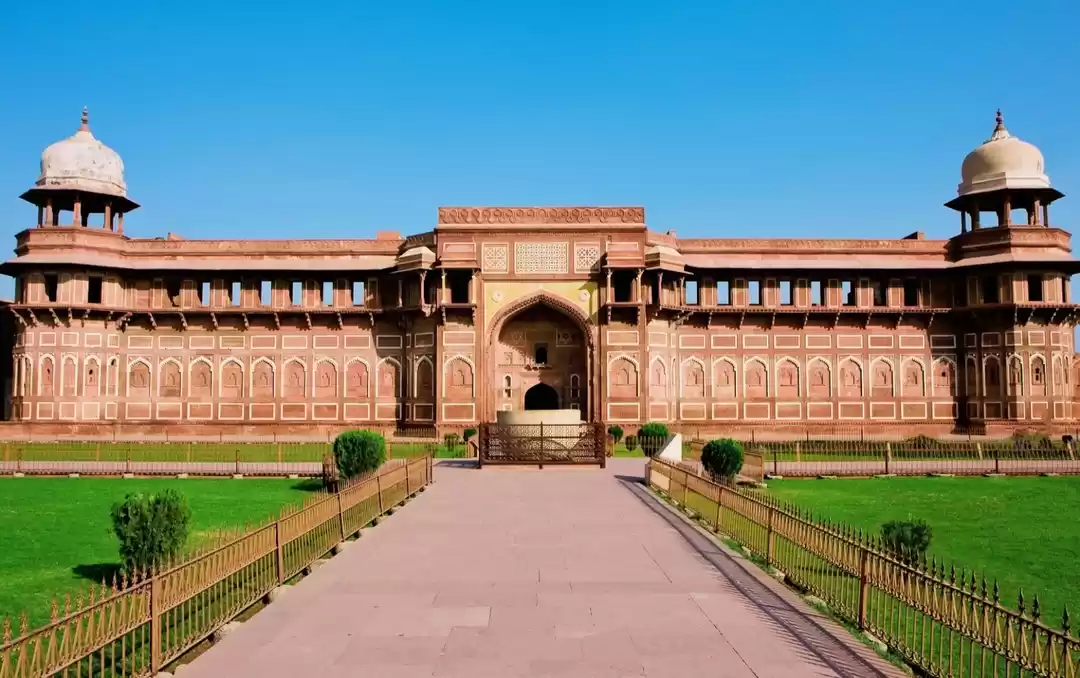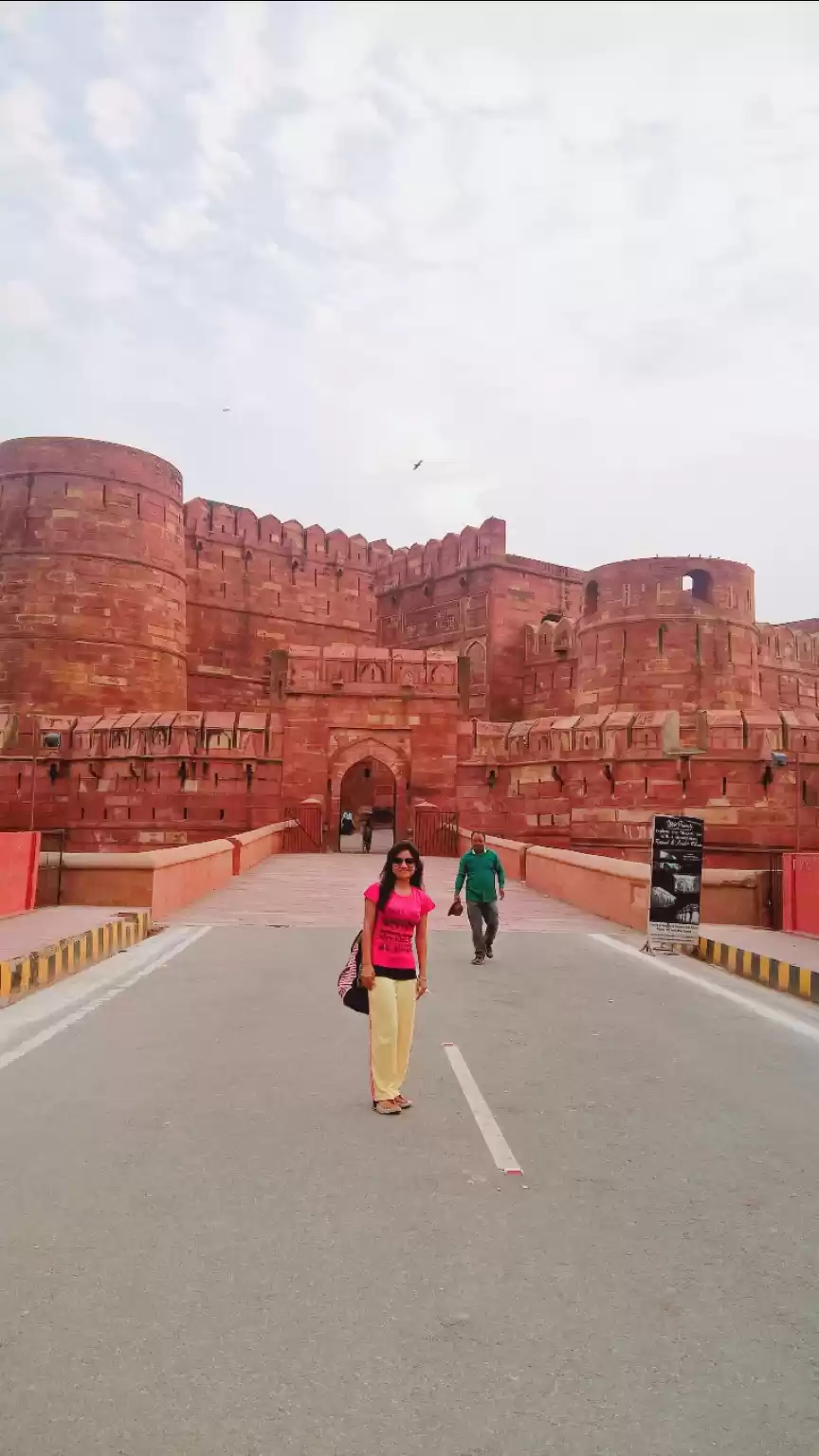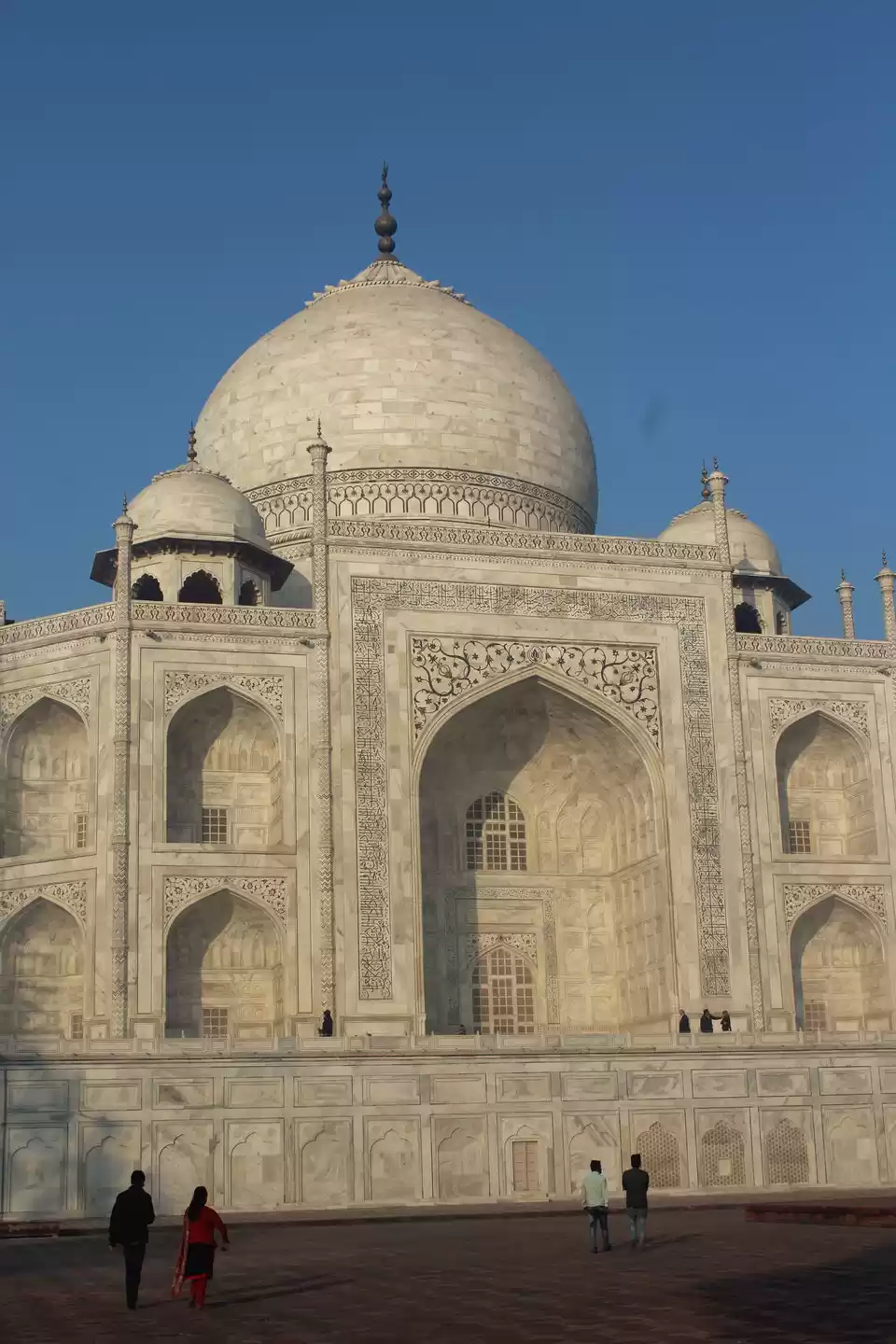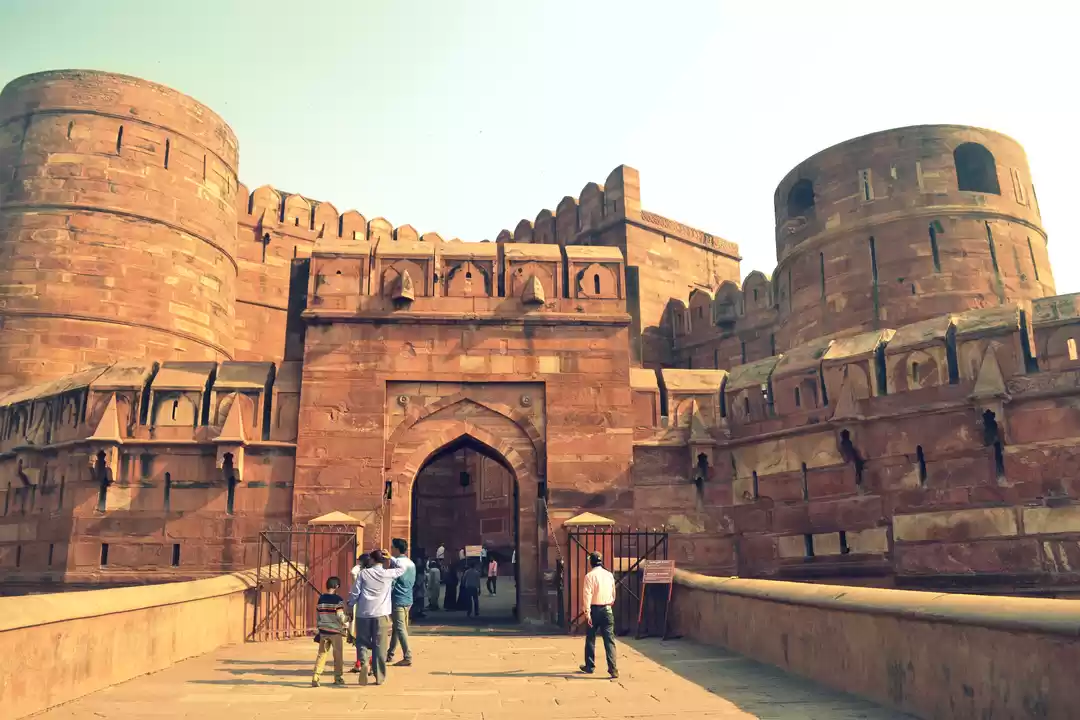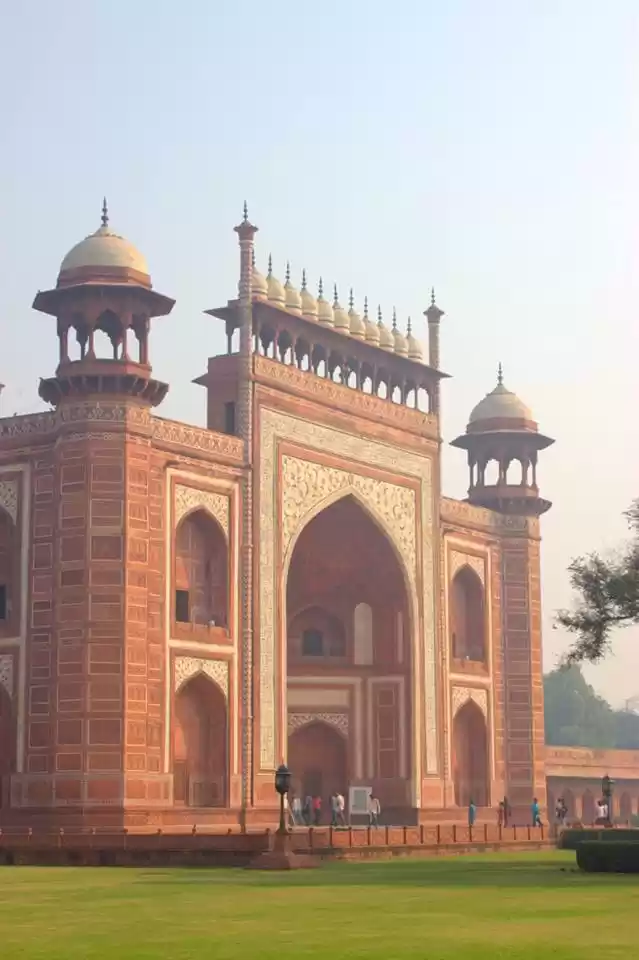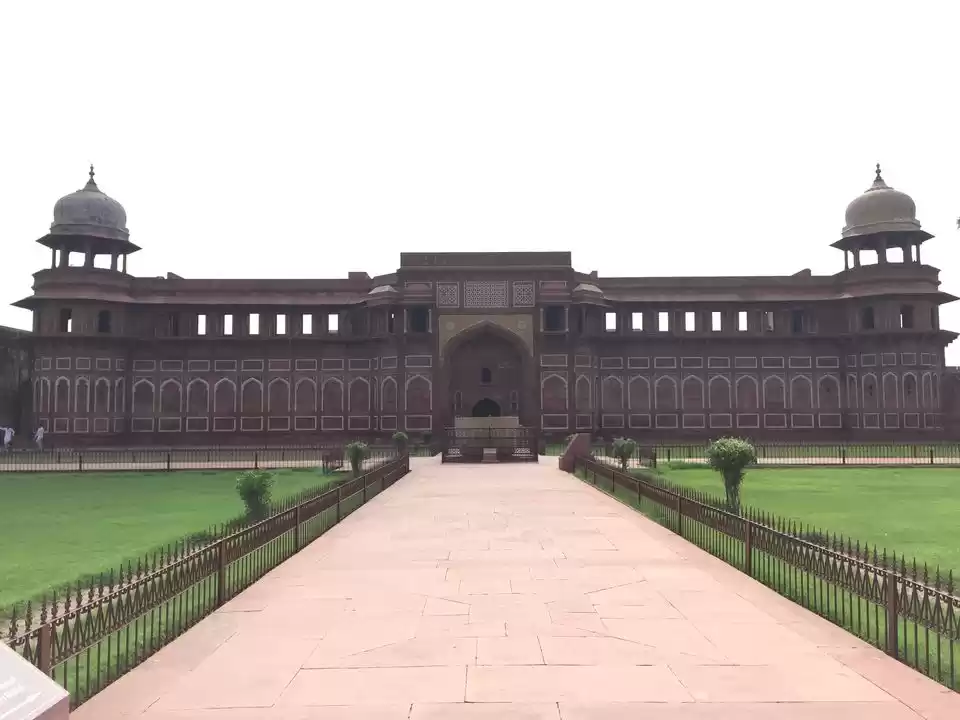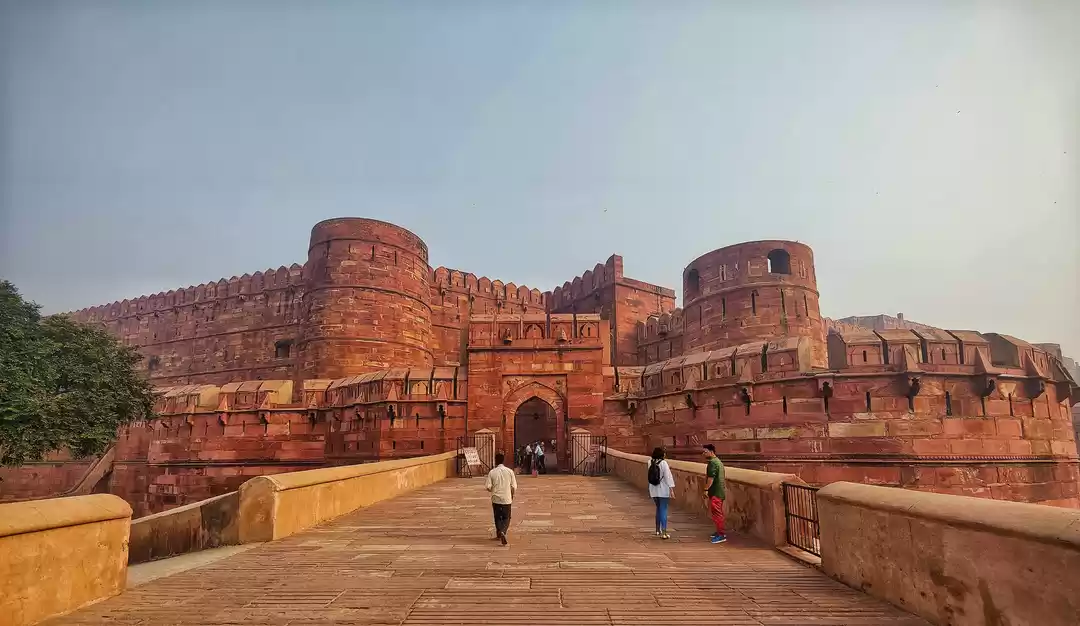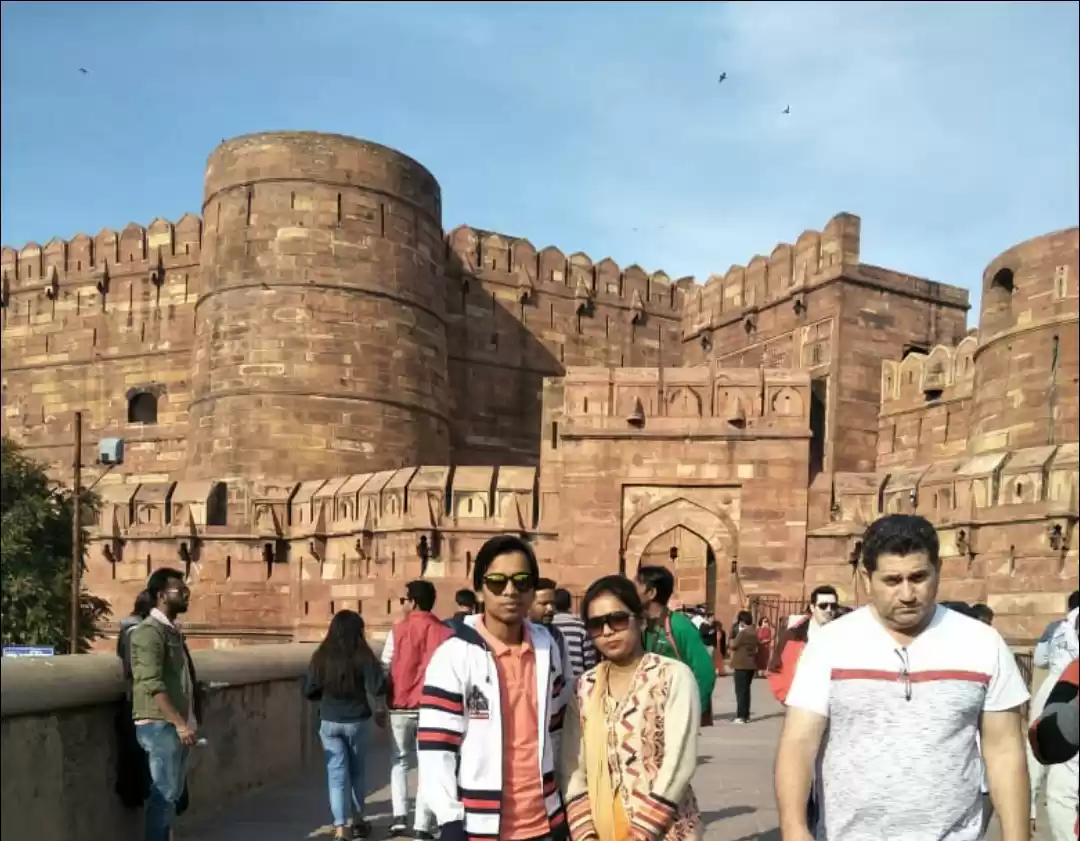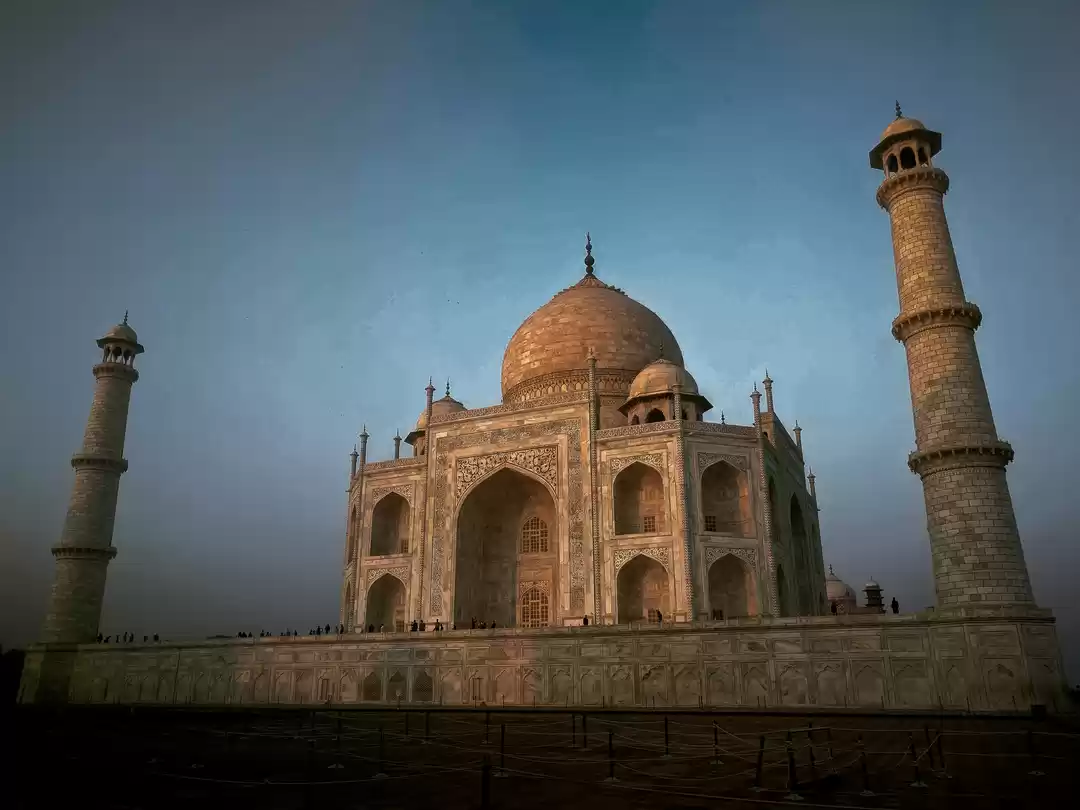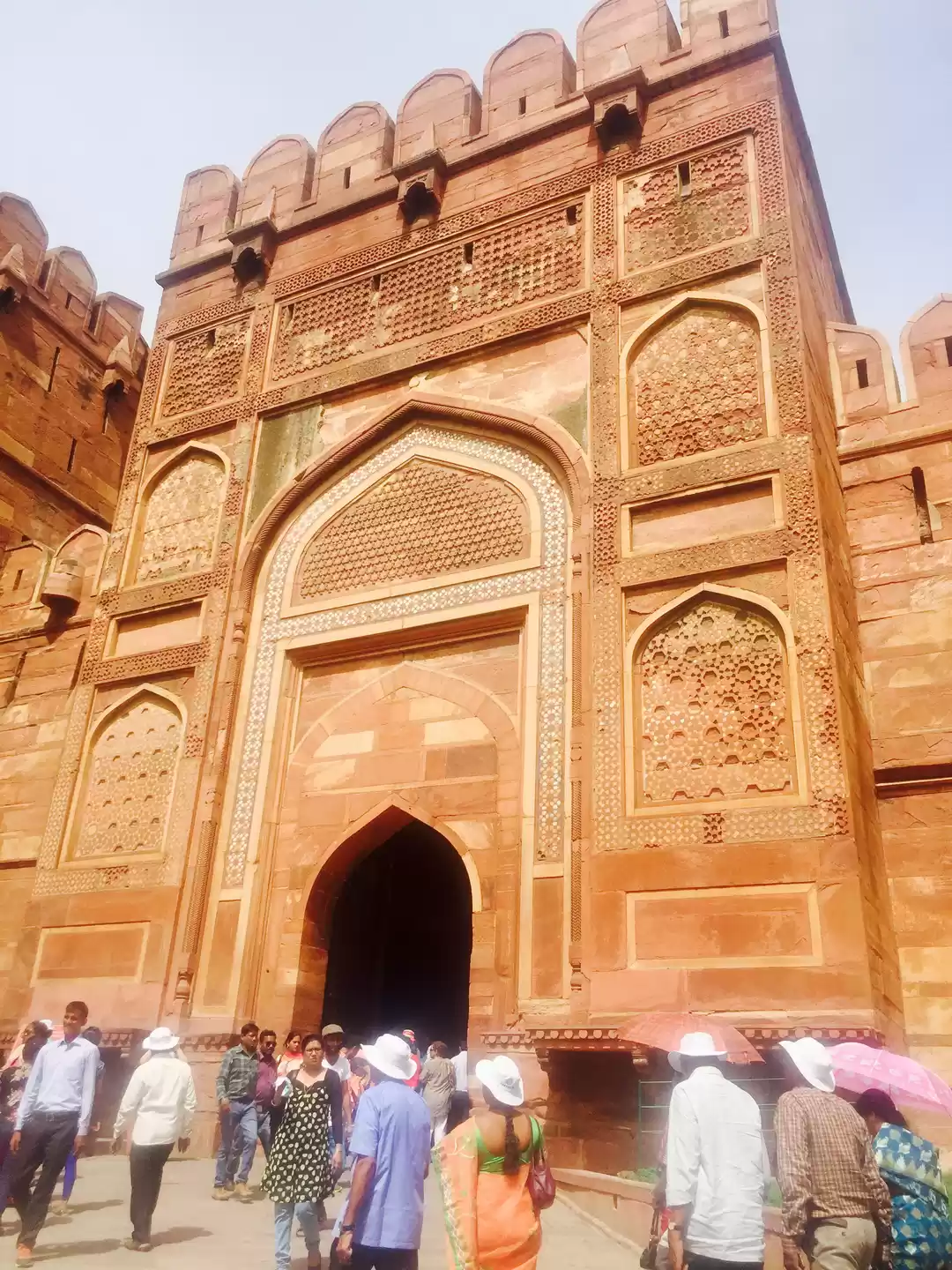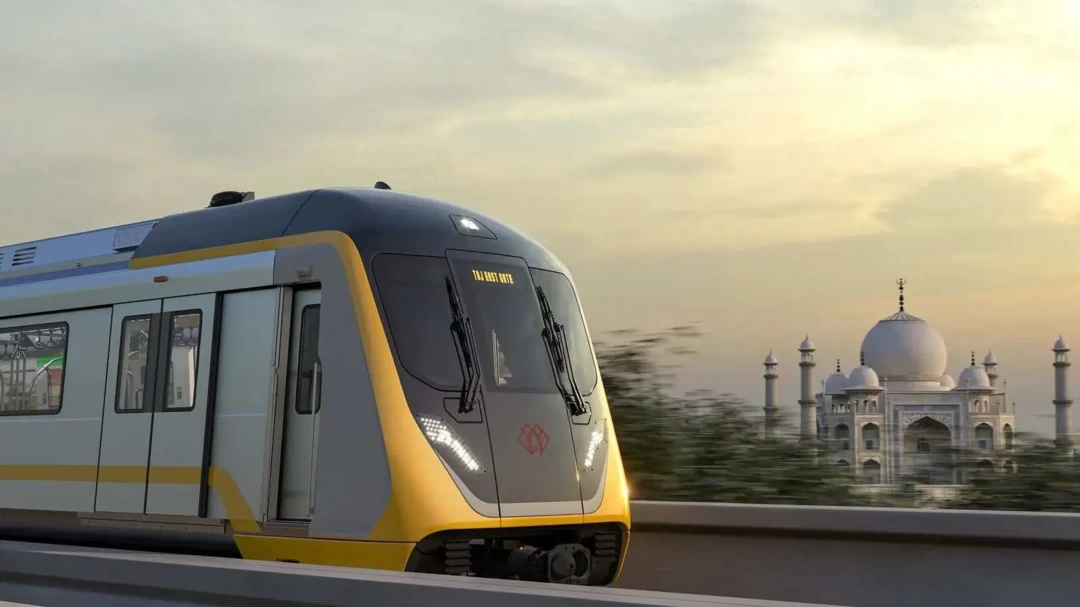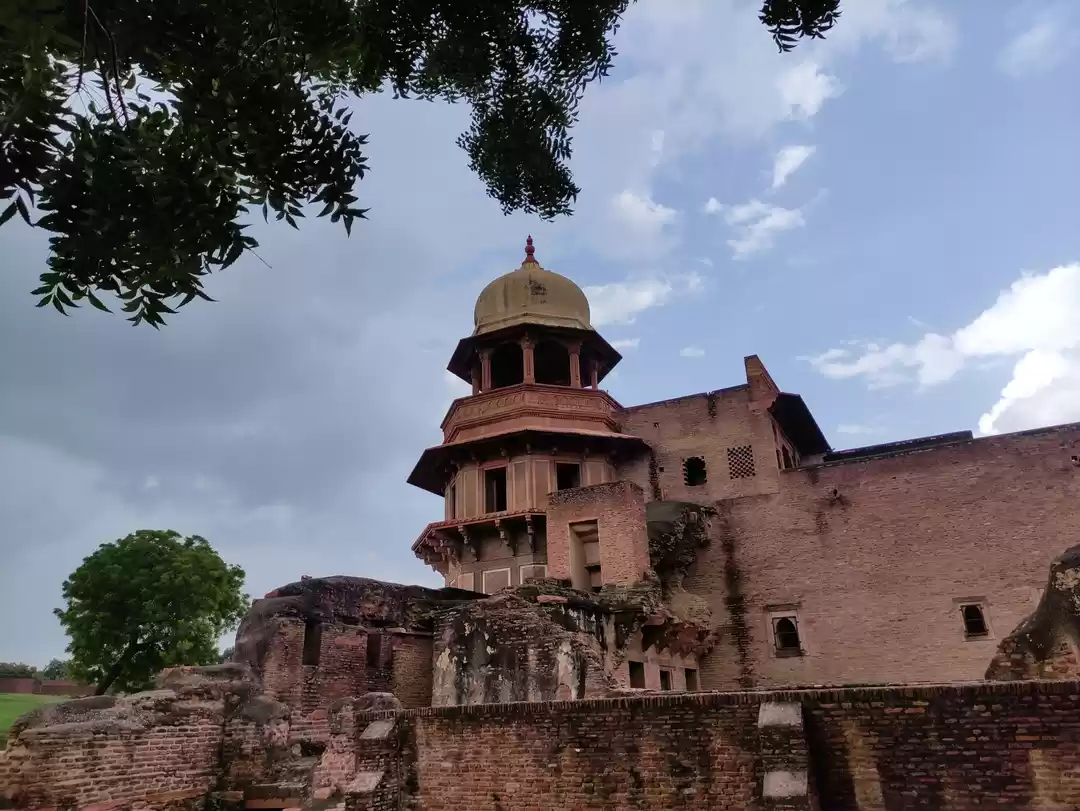Are you planning to visit Agra, the city of love and history? If yes, then you must not miss the Agra Fort, one of the most magnificent and majestic monuments in India. The Agra Fort, also known as the Red Fort of Agra, is a UNESCO World Heritage Site and a symbol of the Mughal Empire's power and artistry. The Agra Fort is a massive fortification that encloses a complex of palaces, mosques, halls, and gardens, built with red sandstone and white marble. The Agra Fort offers a stunning view of the Taj Mahal, the epitome of Mughal architecture and romance, from its ramparts. The Agra Fort is a must-visit destination for anyone who wants to experience the rich and glorious history and culture of India.
In this article, we will tell you everything you need to know about the Agra Fort, such as its history, architecture, entry fee, timings, light and sound show, how to reach, tips for visiting, and top ways to experience. Read on to discover the secrets and stories of the Agra Fort, and get ready to be amazed by its beauty and grandeur.
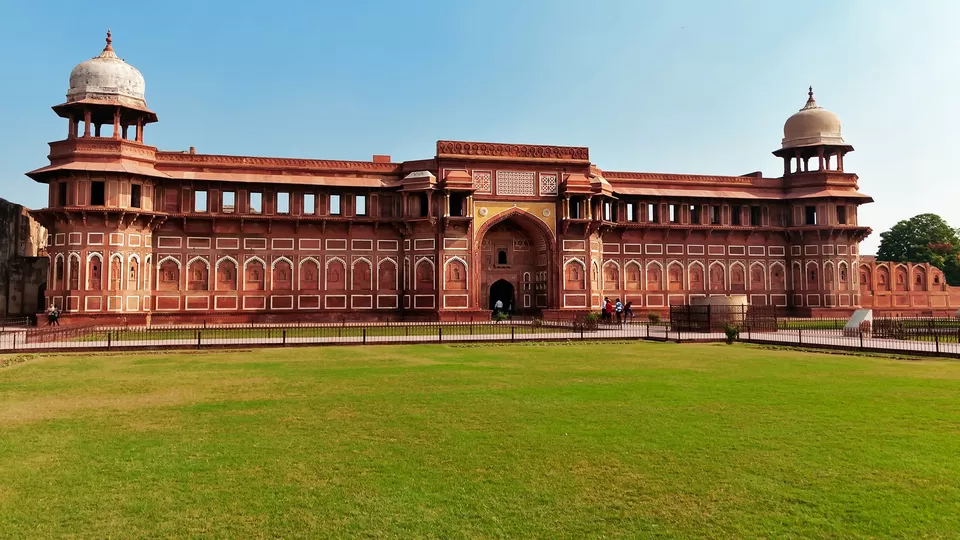
History of Agra Fort
The history of the Agra Fort is a saga of conquest, construction, and destruction, spanning over eight centuries. The Agra Fort has witnessed the rise and fall of several dynasties, from the Rajputs to the Mughals, and from the Marathas to the British. The Agra Fort has also been the home and prison of some of the most famous and infamous rulers and personalities of India, such as Akbar, Jahangir, Shah Jahan, Aurangzeb, and Mumtaz Mahal.
The Rajput Era
The first mention of the Agra Fort dates back to the 11th century, when it was known as Badalgarh, after the Rajput king Badal Singh, who built a brick fort on the site. The fort was captured by the Delhi Sultanate in the 12th century, and remained under their control until the 16th century, when it was seized by the Mughal emperor Babur, the founder of the Mughal dynasty.
The Mughal Era
The Agra Fort reached its peak of glory and splendor under the Mughal emperors, especially Akbar, Jahangir, and Shah Jahan, who transformed the fort into a masterpiece of architecture and art. Akbar, the greatest of the Mughal emperors, rebuilt the fort with red sandstone, and added several structures and features, such as the Pearl Mosque, the Diwan-i-Aam, the Diwan-i-Khas, and the Jahangir Palace. Akbar also made Agra the capital of his empire, and the Agra Fort the seat of his power and administration.
Jahangir, the son and successor of Akbar, continued to embellish the fort with marble and precious stones, and added more structures, such as the Khaas Mahal, the Anguri Bagh, and the Sheesh Mahal. Jahangir also used the fort as a place of leisure and entertainment, and hosted lavish parties and festivals in the fort.
Shah Jahan, the grandson and successor of Jahangir, was the most passionate and romantic of the Mughal emperors, and the builder of the Taj Mahal, the mausoleum of his beloved wife Mumtaz Mahal. Shah Jahan also renovated the Agra Fort with white marble, and added more structures, such as the Moti Masjid, and the Musamman Burj, the tower where he spent his last days as a prisoner of his son Aurangzeb.
Aurangzeb, the son and successor of Shah Jahan, was the last of the great Mughal emperors, and the most ruthless and tyrannical. Aurangzeb deposed and imprisoned his father in the Agra Fort, and executed his brothers in a bloody war of succession. Aurangzeb also plundered and destroyed many of the structures and decorations of the Agra Fort, and replaced them with his own.
The Post-Mughal Era
The Agra Fort declined and deteriorated after the death of Aurangzeb, as the Mughal Empire collapsed and disintegrated. The fort was invaded and plundered by the Marathas, the British, and the Sikhs, who damaged and defaced many of the structures and features of the fort. The fort was also used as a military base and a prison by the British, who occupied the fort until India's independence in 1947. The fort was declared a UNESCO World Heritage Site in 1983, and has been restored and preserved by the Archaeological Survey of India.
Architecture of Agra Fort
The architecture of the Agra Fort is a reflection of the Mughal Empire's artistic and cultural achievements, and a fusion of Hindu and Islamic elements. The Agra Fort is a semi-circular fortification that covers an area of 94 acres, and has a perimeter of 2.5 km. The fort has four gates, two on the east and two on the west, and is surrounded by a moat and a high wall. The wall is made of red sandstone, and is 21 meters high and 18 meters thick. The interior of the fort contains a complex of palaces, mosques, halls, and gardens, built with red sandstone and white marble. The interior structures are decorated with intricate carvings, paintings, inlays, and calligraphy. The fort also offers a stunning view of the Taj Mahal, the epitome of Mughal architecture and romance, from its ramparts.
The Shape and Size
The Agra Fort is a semi-circular fortification that covers an area of 94 acres, and has a perimeter of 2.5 km. The fort is larger than the Red Fort in Delhi, which covers an area of 49 acres, and has a perimeter of 2.4 km. The fort is also larger than the Lahore Fort in Pakistan, which covers an area of 50 acres, and has a perimeter of 1.6 km.
The Walls and Gates
The Agra Fort is surrounded by a moat and a high wall, made of red sandstone. The wall is 21 meters high and 18 meters thick, and has 70 bastions and 9 towers. The fort has four gates, two on the east and two on the west. The gates are named and decorated according to their direction and function. The gates are:
- The Delhi Gate: The main gate of the fort, located on the west side. The gate is also known as the Lahore Gate, as it faces the direction of Lahore, the former capital of the Mughal Empire. The gate is a massive and magnificent structure, with three arches and two octagonal towers. The gate is decorated with white marble and inlaid with semi-precious stones. The gate also has a drawbridge and a crocodile-filled moat for security. The gate is not open to the public, as it is used by the Indian Army, which occupies a part of the fort.
- The Lahore Gate: The secondary gate of the fort, located on the west side. The gate is also known as the Amar Singh Gate, after the Rajput general who defended the fort against the Mughal emperor Shah Jahan. The gate is a simple and plain structure, with a single arch and two circular towers. The gate is the only gate that is open to the public, and leads to the main attractions of the fort.
- The Khizri Gate: The water gate of the fort, located on the east side. The gate is also known as the Yamuna Gate, as it faces the direction of the Yamuna River, which flows along the fort. The gate is a small and modest structure, with a single arch and a wooden bridge. The gate was used by the Mughal emperors to access the river for bathing and boating. The gate is not open to the public, as it is used by the Indian Army, which occupies a part of the fort.
- The Elephant Gate: The ceremonial gate of the fort, located on the east side. The gate is also known as the Hathi Pol, as it has two stone elephants with riders on both sides of the entrance. The gate is a large and impressive structure, with two arches and four domed pavilions. The gate was used by the Mughal emperors to enter the fort in grand processions, accompanied by elephants and horses. The gate is not open to the public, as it is used by the Indian Army, which occupies a part of the fort.
The Interior Structures
The interior of the Agra Fort contains a complex of palaces, mosques, halls, and gardens, built with red sandstone and white marble. The interior structures are decorated with intricate carvings, paintings, inlays, and calligraphy. The interior structures are:
- The Pearl Mosque: The mosque of the fort, located on the north-west corner of the fort. The mosque is also known as the Moti Masjid, as it is built with white marble, which resembles pearls. The mosque is a beautiful and elegant structure, with three domes and twelve pillars. The mosque was built by Shah Jahan for his personal use, and is considered one of the finest examples of Mughal architecture.
- The Diwan-i-Aam: The hall of public audience, located on the west side of the fort. The hall is a large and spacious structure, with a flat roof and three arches. The hall has a red sandstone throne, where the Mughal emperor used to sit and listen to the petitions and complaints of his subjects. The hall also has a marble balcony, where the emperor used to address the public and display his jewels and treasures. The hall is decorated with paintings and carvings, and has a beautiful view of the Yamuna River.
- The Diwan-i-Khas: The hall of private audience, located on the north-east side of the fort. The hall is a small and exquisite structure, with a vaulted ceiling and four pillars. The hall has a white marble throne, where the Mughal emperor used to receive and confer with his ministers and nobles. The hall also has a black marble throne, where the emperor used to sit and admire the Taj Mahal. The hall is decorated with inlays and calligraphy, and has a famous inscription that reads: "If there is a paradise on earth, it is here, it is here, it is here".
- The Moti Masjid: The pearl mosque, located on the south-west side of the fort. The mosque is a replica of the Pearl Mosque in the Agra Fort, but smaller and simpler. The mosque is a rectangular structure, with three domes and two minarets. The mosque is built with white marble, which gives it a pearl-like appearance. The mosque was built by Aurangzeb for his personal use, and is considered one of the finest examples of Mughal architecture.
- The Jahangir Palace: The palace of Jahangir, located on the south-east side of the fort. The palace is a large and impressive structure, with a courtyard and a pool. The palace is built with red sandstone and white marble, and has a blend of Hindu and Islamic styles. The palace was built by Akbar for his son Jahangir, and was used by him as a residence and a place of entertainment. The palace also has a famous bowl, called the Hauz-i-Jahangiri, which was used to measure the wine consumed by Jahangir.
- The Khaas Mahal: The special palace, located on the east side of the fort. The palace is a small and elegant structure, with a pavilion and a terrace. The palace is built with white marble, and has a delicate and refined design. The palace was built by Shah Jahan for his daughters, and was used by them as a private chamber and a dressing room. The palace also has a beautiful fountain, called the Ankh Michauli, which was used by Shah Jahan to play hide and seek with his daughters.
- The Sheesh Mahal: The mirror palace, located on the north side of the fort. The palace is a small and dark structure, with a hall and a chamber. The palace is built with white marble, and has walls and ceilings covered with mirrors and glass. The palace was built by Shah Jahan for his wife Mumtaz Mahal, and was used by them as a royal bath and a bedroom. The palace also has a magical effect, that when a candle is lit in the palace, the whole palace sparkles like a starry night.
- The Anguri Bagh: The grape garden, located on the north side of the fort. The garden is a square and symmetrical structure, with four quadrants and a fountain. The garden is planted with grape vines, flowers, and trees, and has a serene and pleasant atmosphere. The garden was built by Shah Jahan for his wife Mumtaz Mahal, and was used by them as a place of relaxation and romance. The garden also has a secret passage, that leads to the Taj Mahal, which was used by Shah Jahan to visit his wife's tomb.
- The Musamman Burj: The octagonal tower, located on the north-west corner of the fort. The tower is a tall and splendid structure, with a dome and a balcony. The tower is built with white marble, and has intricate inlays and lattice work. The tower was built by Shah Jahan for his wife Mumtaz Mahal, and was used by them as a place of worship and meditation. The tower also has a tragic significance, as it was the place where Shah Jahan spent his last days as a prisoner of his son Aurangzeb, and died while gazing at the Taj Mahal.
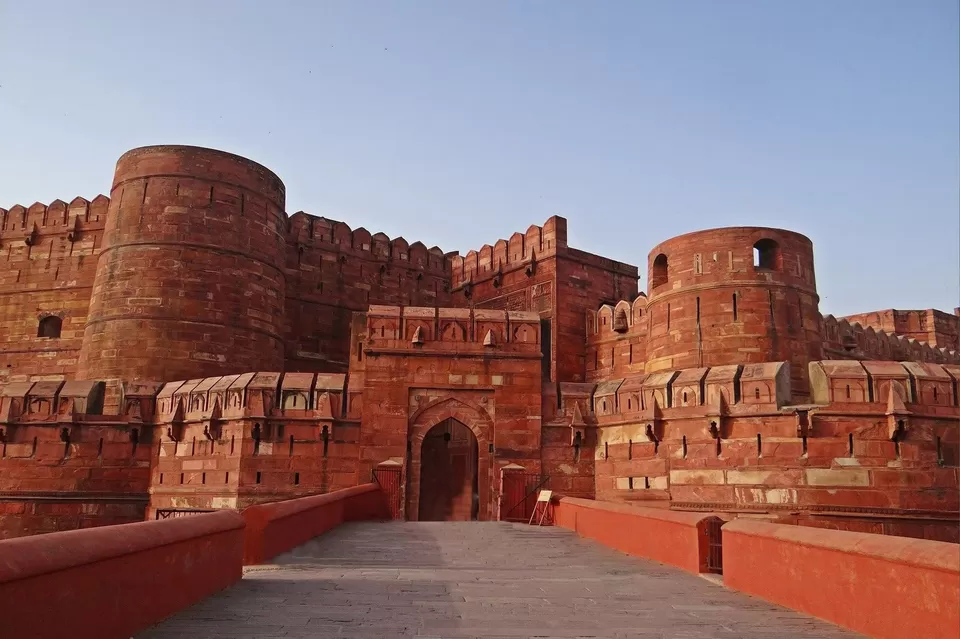
Entry Fee and Timings of Agra Fort
The entry fee and timings of the Agra Fort are as follows:
Indian Nationals | Rs. 40 | 6 am to 6 pm |
Foreign Nationals | Rs. 550 | 6 am to 6 pm |
Children below 15 years | Free | 6 am to 6 pm |
The entry fee includes the access to all the attractions inside the Agra Fort, except the light and sound show, which has a separate ticket price and timings. The online booking option allows you to book the tickets in advance and avoid the queues at the ticket counter. The online booking also gives you a discount of 5% on the entry fee.
Light and Sound Show at Agra Fort
The light and sound show at the Agra Fort is a spectacular and informative show that narrates the history and stories of the Agra Fort, with the help of lighting and sound effects. The show is held every evening in Hindi and English languages, and lasts for about an hour. The show is a must-watch for anyone who wants to learn more about the Agra Fort, and enjoy its beauty and grandeur in a different way.
The ticket price and timings of the light and sound show are as follows
| Indian Nationals | Rs. 80 | 7:30 pm (Hindi), 8:30 pm (English) |
| Foreign Nationals | Rs. 200 | 7:30 pm (Hindi), 8:30 pm (English) |
| Students and Senior Citizens | Rs. 40 | 7:30 pm (Hindi), 8:30 pm (English) |
| Online Booking | [Click here] | 24/7 |
The ticket price includes the access to the light and sound show only, and not to the other attractions inside the Agra Fort. The online booking option allows you to book the tickets in advance and avoid the queues at the ticket counter. The online booking also gives you a discount of 10% on the ticket price.
The show is cancelled in case of bad weather or technical issues, and the tickets are refunded or rescheduled accordingly.
How to Reach Agra Fort
- How to Reach Agra Fort: A detailed guide on how to reach the Agra Fort by air, by rail, or by road, and the options of hiring taxis, autos, or cycle rickshaws. Include the primary keyword "Agra Fort" and the secondary keywords "Agra", "airport", "railway station", and "bus stand".
The Agra Fort is easily accessible by air, by rail, or by road, from any part of India and abroad. The fort is located in the heart of the city of Agra, and is well-connected by various modes of transport. Here are some of the ways to reach the Agra Fort:
- By Air: The nearest airport to the Agra Fort is the Kheria Airport, which is about 8 km away from the fort. The airport has domestic flights from major cities in India, such as Delhi, Mumbai, and Jaipur. The airport also has international flights from some countries, such as Nepal, Bhutan, and Bangladesh. From the airport, you can hire a taxi, an auto, or a cycle rickshaw to reach the Agra Fort. The fare may vary depending on the distance and the bargaining skills, but it should not exceed Rs. 200.
- By Rail: The nearest railway station to the Agra Fort is the Agra Fort Railway Station, which is about 1 km away from the fort. The railway station has trains from major cities in India, such as Delhi, Mumbai, Kolkata, and Chennai. The railway station also has trains from some neighbouring countries, such as Pakistan, Bangladesh, and Sri Lanka. From the railway station, you can hire a taxi, an auto, or a cycle rickshaw to reach the Agra Fort. The fare may vary depending on the distance and the bargaining skills, but it should not exceed Rs. 50.
- By Road: The nearest bus stand to the Agra Fort is the Idgah Bus Stand, which is about 3 km away from the fort. The bus stand has buses from major cities in India, such as Delhi, Jaipur, Lucknow, and Varanasi. The bus stand also has buses from some neighbouring states, such as Rajasthan, Uttar Pradesh, and Madhya Pradesh. From the bus stand, you can hire a taxi, an auto, or a cycle rickshaw to reach the Agra Fort. The fare may vary depending on the distance and the bargaining skills, but it should not exceed Rs. 100.
- By Local Transport: The Agra Fort is also reachable by local transport, such as taxis, autos, or cycle rickshaws, from any part of the city of Agra. The local transport is easily available and affordable, and can be hailed from the road or booked online. The local transport can also take you to other tourist attractions in Agra, such as the Taj Mahal, the Fatehpur Sikri, and the Mehtab Bagh. The fare may vary depending on the distance and the bargaining skills, but it should not exceed Rs. 300.
- Tips for Visiting Agra Fort: A list of the do's and don'ts, and the best practices for visiting the Agra Fort, such as carrying identity cards, avoiding food and tobacco items, hiring approved guides and photographers, and wearing comfortable clothes and shoes. Include the primary keyword "Agra Fort" and the secondary keywords "tips", "guides", and "photographers".
The Agra Fort is a wonderful and worthwhile destination for anyone who wants to experience the history and culture of India. However, to make the most of your visit, you need to follow some tips and guidelines, and avoid some common mistakes and pitfalls. Here are some of the tips for visiting the Agra Fort:
- Carry your identity cards: The Agra Fort is a protected monument, and you need to show your identity cards at the entrance. The identity cards can be your passport, your voter ID, your Aadhaar card, or any other valid document. The identity cards are also required for online booking and discounts.
- Avoid food and tobacco items: The Agra Fort is a heritage site, and you need to respect and preserve its beauty and cleanliness. You are not allowed to carry or consume any food or tobacco items inside the fort, such as snacks, drinks, cigarettes, or chewing gum. You can leave your food and tobacco items at the cloakroom, or dispose of them properly outside the fort.
- Hire only approved guides and photographers: The Agra Fort is a complex and vast structure, and you may need some guidance and assistance to explore and understand it. You can hire guides and photographers from the entrance or online, who are approved and licensed by the authorities. They can provide you with accurate and interesting information, and take you to the best spots and angles for photography. You can also negotiate and bargain with them for the best price and service. You should avoid hiring unapproved guides and photographers, who may mislead and cheat you.
- Wear comfortable clothes and shoes: The Agra Fort is a large and expansive structure, and you may need to walk and climb a lot to see and enjoy it. You should wear comfortable and appropriate clothes and shoes, that suit the weather and the terrain. You should avoid wearing tight and revealing clothes, high heels and sandals, and synthetic and dark fabrics. You should also carry hats, sunglasses, and sunscreen, to protect yourself from the sun and the heat.
- Top Ways to Experience Agra Fort: A showcase of various tour packages and activities that include the Agra Fort as a part of the itinerary, such as guided tours, cultural shows, shopping, and dining. Include the primary keyword "Agra Fort" and the secondary keywords "tour packages", "activities", "shopping", and "dining".
The Agra Fort is not only a historical and cultural monument, but also a destination for fun and adventure. There are many ways to experience the Agra Fort, and to make your visit more enjoyable and memorable. You can choose from various tour packages and activities that include the Agra Fort as a part of the itinerary, such as guided tours, cultural shows, shopping, and dining. Here are some of the top ways to experience the Agra Fort:
- Guided Tours: If you want to learn more about the history and architecture of the Agra Fort, and to explore its hidden and secret corners, you can opt for a guided tour of the fort. There are different types of guided tours available, such as private tours, group tours, half-day tours, and full-day tours. You can book these tours online or at the entrance, and enjoy the services of a professional and knowledgeable guide, who will take you to the best spots and tell you the stories and facts of the fort. You can also customize your tour according to your preferences and interests, and ask questions and doubts to your guide. A guided tour of the Agra Fort is a great way to enrich your knowledge and appreciation of the fort.
- Cultural Shows: If you want to experience the culture and entertainment of the Agra Fort, and to witness its beauty and charm in a different light, you can watch a cultural show near the fort. There are different types of cultural shows available, such as dance shows, puppet shows, and folk music shows. You can book these shows online or at the entrance, and enjoy the performances of talented and skilled artists, who will showcase the traditions and customs of the region. You can also interact and participate with the artists, and learn more about their art and craft. A cultural show near the Agra Fort is a great way to immerse yourself in the atmosphere and spirit of the fort.
- Shopping: If you want to buy some souvenirs and gifts from the Agra Fort, and to indulge in some retail therapy, you can go shopping near the fort. There are different types of shopping options available, such as handicrafts, souvenirs, and leather goods. You can find these items in the shops and stalls near the entrance, or in the markets and bazaars around the fort. You can also bargain and negotiate with the sellers, and get the best deals and discounts. You can buy items such as marble inlay work, carpets, jewellery, pottery, and shoes, which are unique and authentic to the region. Shopping near the Agra Fort is a great way to take home a piece of the fort and its culture.
- Dining: If you want to taste the cuisine and flavours of the Agra Fort, and to satisfy your hunger and thirst, you can go dining near the fort. There are different types of dining options available, such as local cuisine, street food, and fine dining. You can find these options in the restaurants and cafes near the entrance, or in the hotels and resorts around the fort. You can also order and enjoy the food and drinks in the comfort and convenience of your room or balcony, with a view of the fort. You can try dishes such as petha, agra ka chaat, mughlai biryani, and tandoori chicken, which are delicious and famous to the region. Dining near the Agra Fort is a great way to savour the taste and aroma of the fort and its history.
Conclusion:
The Agra Fort is a UNESCO World Heritage Site and a symbol of the Mughal Empire's power and artistry. The Agra Fort is a stunning and majestic structure, built with red sandstone and white marble, and decorated with carvings, paintings, inlays, and calligraphy. The Agra Fort has a rich and glorious history, and has been the home and prison of some of the most famous and infamous rulers and personalities of India. The Agra Fort offers a breathtaking view of the Taj Mahal, the epitome of Mughal architecture and romance, from its ramparts. The Agra Fort is a must-visit destination for anyone who wants to experience the history and culture of India, and to have fun and adventure.






